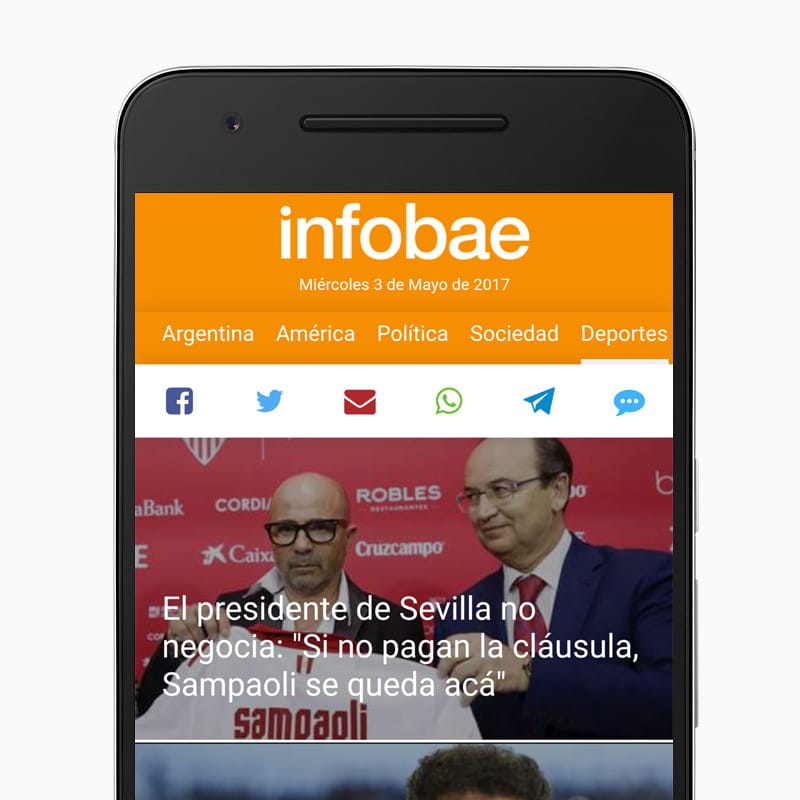
Founded in 2002 by lawyer, journalist, and media entrepreneur Daniel Hadad, Infobae is one of Argentina’s first major digital-only news outlets. With 38 million monthly active unique users, it’s one of the most-read Spanish-language news outlets in the world, thanks to exponential growth in Latin America.
- 230% longer sessions than on previous mobile site
- 3X more page views per session than on previous mobile site
- 5% bounce rate versus 51% on previous mobile site
Challenge
Mobile accounts for 71% (and still growing) of Infobae’s total traffic, with 84% of these users on Android phones. Engagement rates on mobile haven’t matched those on desktop, however. Desktop readers are deeply engaged, spending on average almost 27 minutes per session. On mobile, this number plummeted to just 3 minutes per session.
Despite a growing number of mobile site visitors, mobile bounce rates were much higher than on desktop—51% versus 30%, respectively. Infobae believed the high bounce rate and short session durations on mobile were caused by slow load times. They looked to Progressive Web App (PWA) technologies for a solution. "We know that speed is key in the culture of information, media, and news,” says Infobae’s Founder and President Hadad.
Solution
Instead of minimally updating their mobile site, Infobae rolled out a completely new PWA to 10% of their overall monthly visitors. They saw immediate improvements. Navigation within the site loaded in less than a second, which had a huge affect on engagement. Average session duration grew to over 7 minutes, compared with just 3 minutes on their mobile website. They also saw dramatically lower bounce rates, down to an unprecedented 5% on the new PWA.
Infobae also took advantage of service worker to deliver reliable performance on unreliable networks. Their best-in-class PWA achieved a performance score of 93/100 on Lighthouse, an automated tool for measuring web-page quality.
Infobae’s PWA is all about speed—for readers, journalists, advertisers, and developers. The company took their PWA from conception to launch in just months, showcasing their focus on digital experimentation and commitment to producing high-quality reader experiences. PWA technologies will power their ambitious plans to accelerate capabilities for mobile and position them for continued growth.
“The transformation to digital journalism is driven by cutting-edge technology. PWAs give modern publishers a strong, agile, and flexible infrastructure that promotes rapid innovation and experimentation—things that are critical for long- term success,” says Hadad. “We’re committed to digital speed at Infobae. We look forward to PWAs powering our ambitions and accelerating our growth.”
We have a passion for journalism and technology. Our new PWA will enhance our newsroom’s work and the experience of millions of unique users who choose Infobae to deliver captivating and relevant information for their daily lives. We’re committed to innovation as we continue to drive the future of news delivery.
Daniel Hadad, founder & president, Infobae
Performance metrics: desktop site, mobile site & PWA
| Avg. session duration | Page views per session | Bounce rate | |
|---|---|---|---|
| Desktop site | 00:27 | 6 | 32% |
| Mobile site | 00:03 | 2 | 51% |
| PWA | 00:07 | 6 | 5% |
